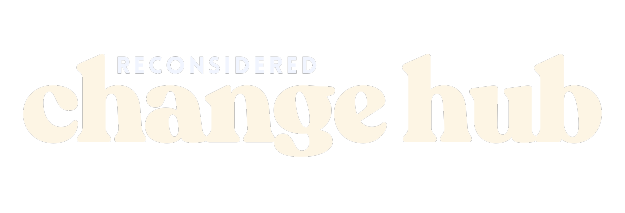CHANGE HUB FREEBIE
Breaking It Down: COP28
Part of the Change Hub’s Learning Labs, our Breaking It Down series unpacks a complex topic or emerging trend in sustainable business through a practical, actionable, jargon-free interview with a leading expert. Each module features takeaways in video, audio (members-only) and text form, so you can learn however works best for you.
In this edition of Breaking It Down, Stephanie Klotz, the Communications and Marketing Director at EIT Climate-KIC, breaks down what sustainable business leaders need to know in the lead-up to COP28 in Dubai.
For nearly 20 years, Stephanie has been working at the intersection of sustainability and communications across multiple sectors. She is passionate about the power of narratives to achieve meaningful social change and has dedicated her career to turning complex concepts into simple messages. Prior to her role at EIT Climate-KIC, Stephanie spent several years working in corporate philanthropy as well as at a leading child rights NGO. She holds a degree in Forest Engineering from the Catholic University of Chile and a Master’s in Environmental Sustainability from the University of Edinburgh.
For the past few years, Stephanie has attended and managed EIT Climate-KIC’s participation in the annual United Nations Climate Change Conference (better known as COP). As she prepares to attend COP28 in Dubai in a few weeks, she joined us to help break down what we need to know about engaging with COP as sustainable business practitioners.
🧩 BREAKING DOWN COP
COP, aka the Conference of Parties, aka the United Nations Climate Change Conference, is the formal annual meeting where countries that have signed the United Nations Framework Convention on Climate Change (UNFCCC) come together to negotiate international climate treaties, discuss commitments and evaluate progress.
The next event is COP28 UAE, which takes place November 30-December 12, 2023, in Dubai.
Stephanie described three ‘zones’ across which COP activity typically takes place, with varying levels of access:
The Red Zone — the formal negotiation space, mostly reserved for country delegations
The Blue Zone — more of a trade show atmosphere with country pavilions, programming, panel discussions and keynote sessions
The Green Zone — a broader area that is also open to the public and private sector, NGOs and the general public, where the majority of civil society and citizen-led action takes place
Given these different ways to engage, COP has become a significant point in the year for leaders in the climate movement to network, build partnerships and make deals toward global climate action.
🤔 WHY IT MATTERS
Whether or not your business is able to participate in COP — and many are not, given its cost and exclusivity — what goes down at the event and in the weeks after is of vital importance to global and national climate policy. Sustainability pros should have a working understanding of the commitments made by the countries in which your company operates, in order to be able to translate those commitments into business action.
Plus, with all eyes on climate for those few weeks, it’s a prime opportunity to engage your employees and key stakeholders around how your company might be able to deepen its climate commitments.
✅ WHAT YOU CAN DO ABOUT IT
IF YOU’RE OBSERVING COP28 UAE:
Track Your Country’s Commitments. Keep your eye on the first-ever Global Stocktake — an inventory of country climate commitments made to-date — so you can evaluate how they align with your business strategy.
Evaluate Your Country’s Positions. Understand the stances your country is taking in the negotiations, and whether those line up with your business’s approach. You’ll want to assess the potential impact of your country’s stance on your operations and industry, as well as consider whether there’s an opportunity for your company to engage in more advocacy.
Listen Actively — and Broadly. We have shared a few of Stephanie’s go-to resources for tracking COP28 developments below. On top of these, seek out the perspectives of those taking a stand on the sidelines, including Indigenous groups, marginalized communities and youth activists, to get a more comprehensive pulse on the event.
IF YOU’D LIKE TO PARTICIPATE IN COP29 (LOCATION TBC):
Start Early. Participating in COP as a business or individual comes down to your connections, Stephanie says. Start working your networks now, especially with government contacts who might be coordinating activity around country pavilions in the Blue Zone.
Create Your Talking Points. One of the best ways for businesses or individuals to participate in COP is to give a talk or join a panel. Start thinking about how your company can meaningfully contribute to the conversation so you can craft a meaningful pitch.
Tap Your Networks: If there isn’t an opportunity to participate in your country’s programming, Stephanie suggests checking with industry networks or groups like the Women in Climate Network to see if there’s an opportunity to plug into their activity.
🤓 HOW TO LEARN MORE
Here are a few resources Stephanie recommends checking out:
World Resources Institute (WRI): Stephanie’s top pick is the WRI hub, which includes easy-to-understand COP updates.
Climate Action Network (CAN): Offering daily COP updates from more of an activist perspective.
News coverage:
Outrage and Optimism Podcast: This podcast hosted by Christiana Figueres and Tom Rivett-Karnac — two climate advocates who have been intimately involved in COP processes — is sure to offer valuable insights before, during and after the proceedings.
